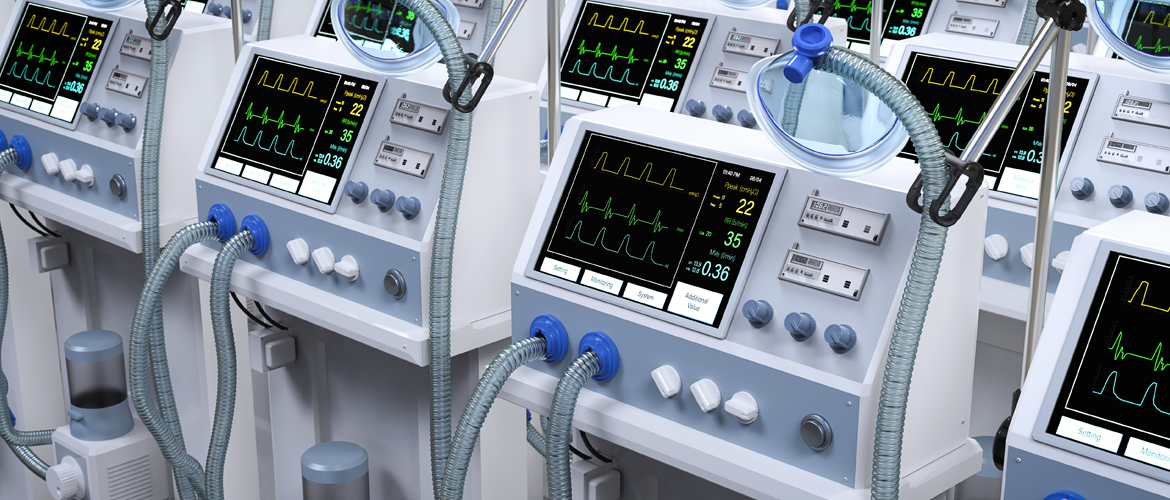One down-side of being human is the realization that not everyone can be considered a “team player”, even at a time of crisis when our entire species is being challenged. Whether creating and delivering key medical devices, critical industry products, or even a piece of software, we all need to focus equally on the potential influence of “bad actors”, as well as the efficiency of doing it right first time. There will be consequences if we don’t.
With the Covid-19 outbreak now in full swing world-wide, reports are being seen of those who would use the opportunity to take advantage, by supplying fake medical goods and supplies at inflated prices to desperate customers. This is not even the worst trait that humanity is showing. There are infected people walking around our supermarkets right now, caring not that they are spreading the disease. Apart from personal experience of this recently, we can figure out that this is bound to happen statistically. If we work from the average, 50% of people are worse than the other 50%. Given that there are so many people on the planet, the tiniest fraction of a percent at the most negative end are still quite significant in terms of the havoc they can wreak.
It is not all driven by evil intent. Lessons learned as a young software developer many years ago, was that most of the effort of software development is focused on the use of a system by people who know nothing about what they’re doing. Pressing the wrong button at the wrong time, entering data that does not make sense should not cause a system exception or data corruption. Most cases of incorrect operation, are simply mistakes. There are those cases however, where a lot of effort has been made, for example to overload the entry field in a simple web-browser, so as to gain access to change the software itself. Personally, I think that any case where that can happen is sloppy programming, but not all software is created equally. In my case at least, experience developing software now long ago, was a great life-lesson.
In both manufacturing and the supply-chain, we experience exactly the same scope of potential issues, which has become a real concern now in the medical and pharma industry, as production of key testing equipment, kits and personal protection equipment, ramp up faster than could ever have been expected in a normal world. The real issue however is about to go much further than ever before. The fact is, that kits for Covid-19 detection, and potentially any cure or treatment, are likely to be introduced rather rapidly, with a reduced opportunity for completion of trials. Of course, any decision to do this will be based on a risk analysis of doing something too soon, against doing it too late. Whatever shade of gray is settled on, there will be the need to track the effectiveness and any potential problems in the market immediately, with surgical precision. Knowing the medical manufacturing and supply-chain provenance of each uniquely identified it or container of medication should be required, with immediate feedback of the results. Here is where the “bad actors” come in. It must be expected that “fake” kits and medication will be created, that may even appear to work, but perhaps with a less reliable result, or with greater side-effects. Firstly, we must be sure to deter these counterfeit products from being made and sold in the first place, but secondly, we cannot allow results from the fake tests and medication to skew the results of the genuine articles. Life-critical decisions in real-time are to be made based on these results.
Within manufacturing, we all have a key part to play in this. We may think that “fakes” come from another factory somewhere, but in reality, many come from our own factories. Rejected batches of materials and test failures somehow appear in products in the market. There are a plentiful range of standards associated with the production of anything medical, but, how well will these be adhered to when there is life or death pressure to deliver, new medical manufacturing sites coming up to speed, and in addition, there are bad actors in play.
The only solution is to completely systemize the manufacturing process, with secure and effective, exact traceability of materials, actions and processes, automated where possible, together with accountability. Doing this by adding more humans is not the answer, as firstly, there is no time as there is a limited human resource, with time taken to build adequate training and experience, not to mention the attraction to bad actors. We would not expect the worst examples to be working in our critical manufacturing environments, but there will be people in the middle of the band, who genuinely think they are doing the best thing, when in fact they are compromising the output. This is especially true in those amazing companies who are already adapting what they do in order to support the demand for medical products, who think that they are familiar enough with the appropriate need for compliance, but are new to this vertical in the industry.
Systemized traceability needs to extend from raw materials all the way through to the point of consumption of the product or device being made, in such a way that responsibility can be assumed without risk of false data being created, minimizing the risk of counterfeit products and materials getting into the hands of a human that needs urgent and effective care. Modern digital MES tools and medical supply chain technologies to do this are now here, though not as well utilized in the mainstream medical manufacturing arena as one would hope. For this case or the next, they certainly need to be. As humans, we sometimes need to be protected from ourselves.
Sign up for our blog
Stay up-to-date on the latest in manufacturing trends, insights and best practices.





